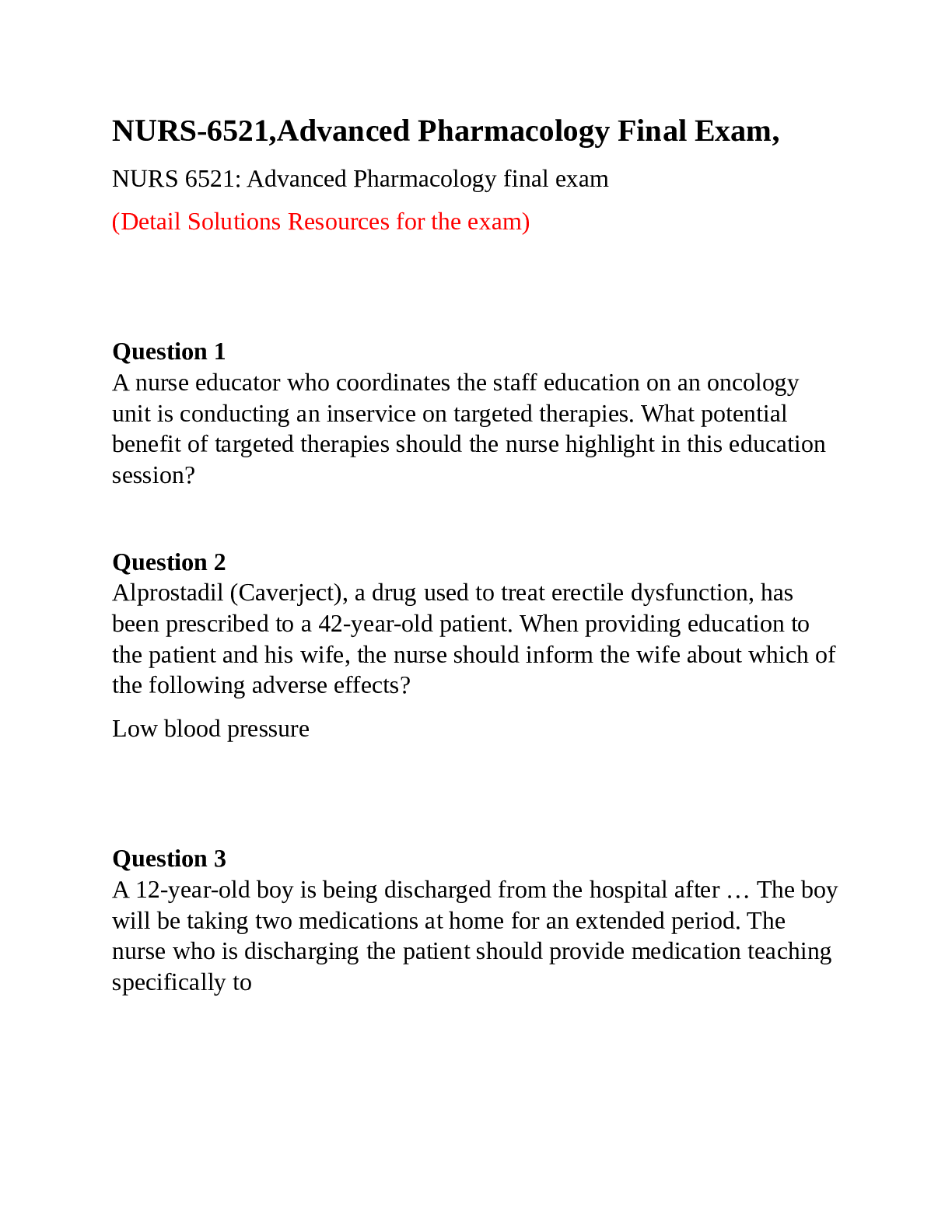Atomic Structure Part 2.
Document Content and Description Below
Q1. The successive ionisation energies for element X are shown in the following graph. Which element is X? A Nitrogen B Phosphorus C Aluminium D Boron (Total 1 mark) Q2. Tellurium is the elem... ent with atomic number of 52 (a) Using information from the Periodic Table, complete the electron configuration of tellurium. (1) (b) The mass spectrum of a sample of tellurium is shown in the graph. (i) Use the graph to calculate the relative atomic mass of this sample of tellurium. Give your answer to one decimal place. (3) (ii) Suggest what might cause the relative atomic mass of this sample to be different from the relative atomic mass given in the Periodic Table. (1) (c) Write an equation for the reaction that occurs when a tellurium ion hits the detector. (1) (d) State the m / z value of the ions that produce the biggest current at the detector when the spectrum in the graph is recorded. Give a reason for your answer. (2) (e) The mass spectrum of tellurium also has a small peak at m / z = 64 Explain the existence of this peak. (2) (f) Predict whether the atomic radius of 124Te is larger than, smaller than or the same as the atomic radius of 130Te Explain your answer. (2) (Total 12 marks) Q3. (a) Table 1 shows some data about fundamental particles in an atom. Table 1 Particle proton neutron electron Mass / g 1.6725 × 10–24 1.6748 × 10–24 0.0009 × 10–24 (i) An atom of hydrogen can be represented as 1H Use data from Table 1 to calculate the mass of this hydrogen atom. (1) (ii) Which one of the following is a fundamental particle that would not be deflected by an electric field? A electron B neutron C proton Write the correct letter, A, B or C, in the box. (1) (b) A naturally occurring sample of the element boron has a relative atomic mass of 10.8. In this sample, boron exists as two isotopes, 10B and 11B (i) Calculate the percentage abundance of 10B in this naturally occurring sample of boron. (2) (ii) State, in terms of fundamental particles, why the isotopes 10B and 11B have similar chemical reactions. (1) (c) Complete Table 2 by suggesting a value for the third ionisation energy of boron. Table 2 First Second Third Fourth Fifth Ionisation energy / kJ mol–1 799 2420 25 000 32 800 (1) (d) Write an equation to show the process that occurs when the second ionisation energy of boron is measured. Include state symbols in your equation. (1) (e) Explain why the second ionisation energy of boron is higher than the first ionisation energy of boron. (1) (Total 8 marks) Q4. The mass spectr [Show More]
Last updated: 2 years ago
Preview 1 out of 51 pages

Buy this document to get the full access instantly
Instant Download Access after purchase
Buy NowInstant download
We Accept:

Reviews( 0 )
$18.50
Can't find what you want? Try our AI powered Search
Document information
Connected school, study & course
About the document
Uploaded On
Nov 05, 2021
Number of pages
51
Written in
Additional information
This document has been written for:
Uploaded
Nov 05, 2021
Downloads
0
Views
188



.png)














